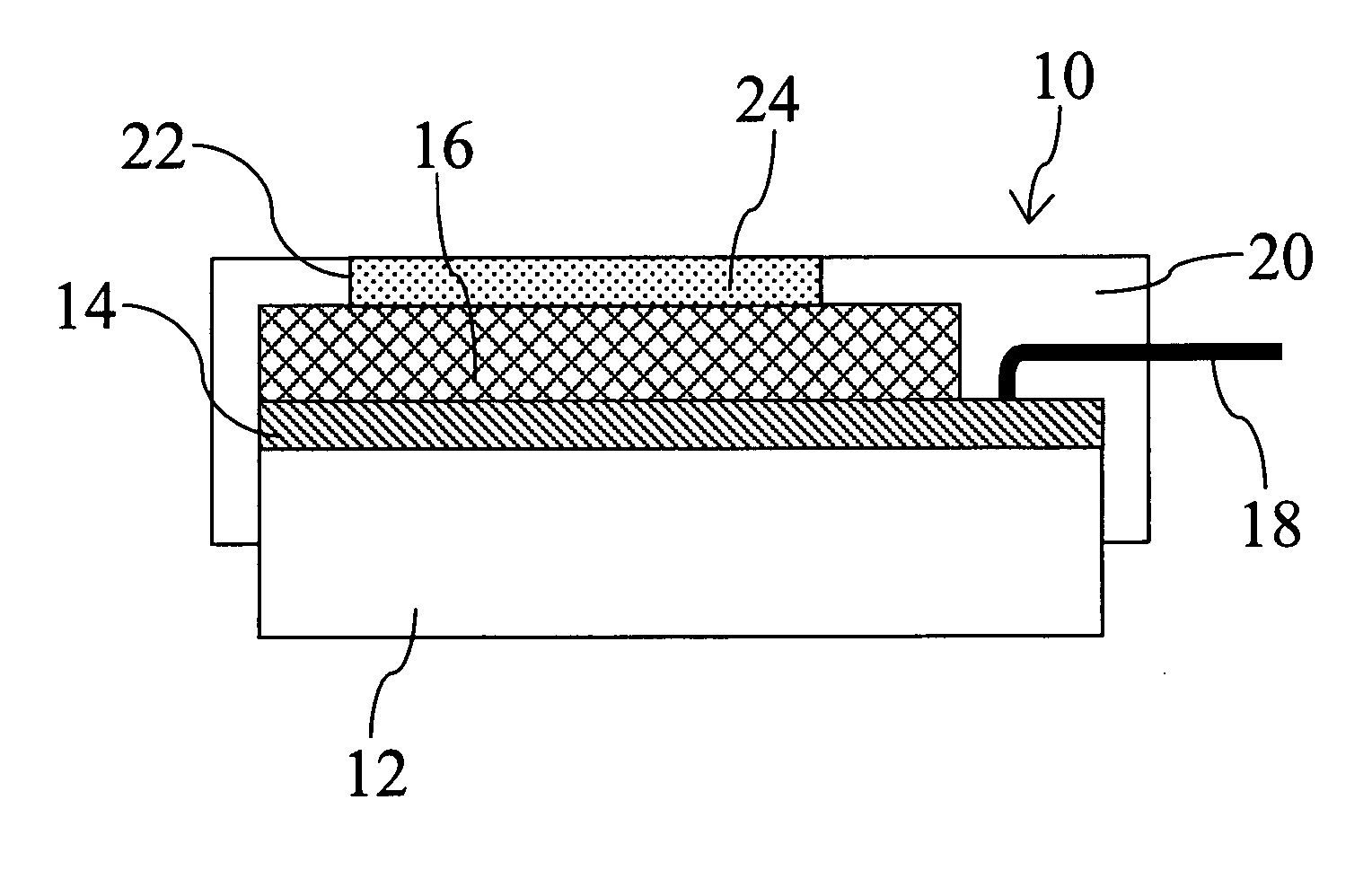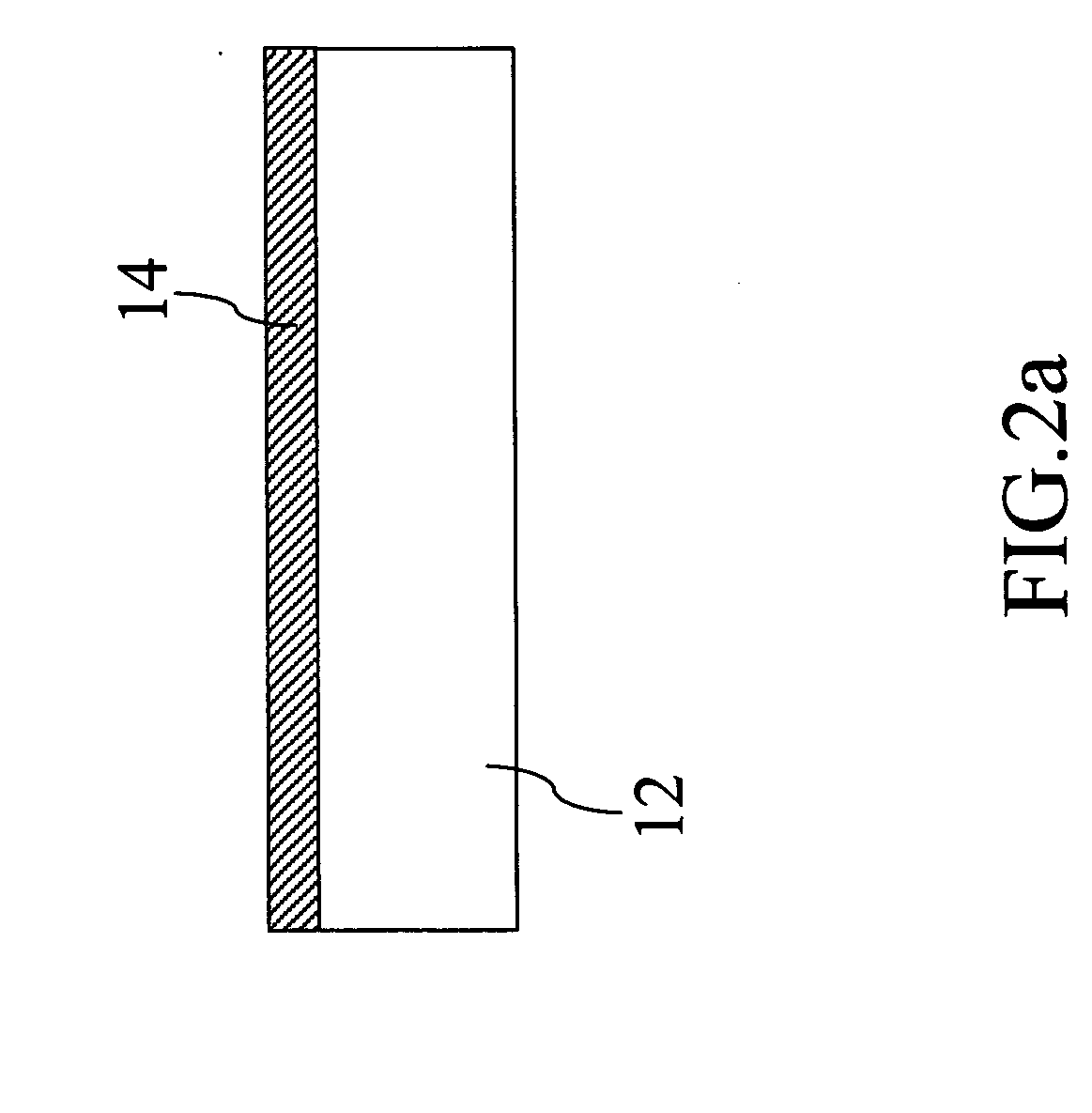Electrical urea biosensors and its manufacturing method
- Summary
- Abstract
- Description
- Claims
- Application Information
AI Technical Summary
Benefits of technology
Problems solved by technology
Method used
Image
Examples
Embodiment Construction
[0024] The present invention utilizes the tin dioxide as the pH ion-sensitive film of the extended ion-sensitive gate field effect transistor (EGFET) and utilizes the separation structure of tin dioxide / indium tin oxide / substrate to form the urea biosensor. All the structure is the separative gate ion-sensitive field effect transistor and the suitable range of the structure is all biosensor based on the pH value detecting.
[0025] Such as shown in the FIG. 1, the present invention is an electrical urea biosensor comprising a glass substrate 12, wherein an indium tin oxide (ITO) conductive layer 14 on a surface of the glass substrate 12. Besides, there is a non-isolation solid state ion-sensitive film 16, such as the solid material of the tin dioxide, positioned on a surface of the indium tin oxide conductive layer 14 to use as the solid state ion-sensitive electrode to detect the pH value of the solution. The ion-sensitive film 16 provides with a sensitive region and a non-sensitive ...
PUM
| Property | Measurement | Unit |
|---|---|---|
| Electrical conductor | aaaaa | aaaaa |
| Sensitivity | aaaaa | aaaaa |
| Electric impedance | aaaaa | aaaaa |
Abstract
Description
Claims
Application Information
 Login to View More
Login to View More - R&D
- Intellectual Property
- Life Sciences
- Materials
- Tech Scout
- Unparalleled Data Quality
- Higher Quality Content
- 60% Fewer Hallucinations
Browse by: Latest US Patents, China's latest patents, Technical Efficacy Thesaurus, Application Domain, Technology Topic, Popular Technical Reports.
© 2025 PatSnap. All rights reserved.Legal|Privacy policy|Modern Slavery Act Transparency Statement|Sitemap|About US| Contact US: help@patsnap.com



